Driving in the Snow with Rear Wheel Drive
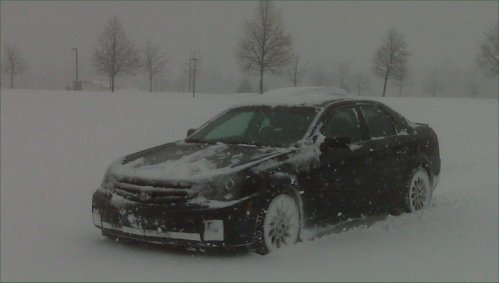 My 2006 Cadillac CTS takes on
Michigan Winter.
My 2006 Cadillac CTS takes on
Michigan Winter.
I get many questions asking what should be done about driving in
the snow with a rear wheel drive car. As discussed in
Benefits of RWD, there is one area
where Front Wheel Drive is actually better. And that is
accelerating in very low traction conditions - such as snow and ice.
When accelerating in snow or ice, front drive cars have more weight
over the front wheels. This gives more traction for acceleration in
very slippery conditions. This is the biggest perceived advantage to
a front drive car. It is worth repeating that in all
other situations (such as braking and handling) rear wheel drive is
better.
But we still need to be able
to drive in the snow! Below are a couple of options for
better snow driving.
- Option 1:
Add weight over the rear
wheels. This is the simplest and least costly
option. Put 100 to 150 pounds into the trunk of your rear
drive car. I like to use inexpensive "play sand" that you
can buy at most home improvement stores. It comes in
convenient 40 pound bags. Adding this weight will put more
weight over the drive wheels - giving much better traction when
accelerating on snow or ice. The downside is that the
extra weight will have a small affect in braking and handling,
so when the road conditions are better it is a good idea to take
the weight out. Adding some weight is simple to do but
makes a dramatic difference!
- Options 2: Use Snow tires. Note
that using snow tire will drastically improve traction in snow
and ice at all speeds in all types of vehicles. I use them
on every vehicle I own because the improvement is acceleration,
braking, and handling makes driving in poor conditions
safer.
Snow Tires should not be
confused with "All Season" tires. Snow
tires are designed specifically for snow and ice, while all season
tires are designed to be a compromise for all different
conditions. I use summer performance tires in the non snow
season and snow tires in the winter. Here in Michigan, I put
my snow tires on in early November and take them off in March.
Your tires are the biggest factor in your cars ability to
accelerate, brake and handle. Investing in the appropriate
tires will yield the best overall driving experience.
There are 2 kinds of snow tires.
The major categories are "Performance Winter Tires" and
"Winter Snow Tires." Performance winter tires are constructed
to work very good in snow and ice but also are able to sustain
higher speeds and have good dry road traction. "Winter Snow
Tires" are designed for maximum snow and ice traction - they are not
designed for high speeds (>100 MPH) or dry weather handling.
I have used both types and observed the following:
Winter Snow Tires
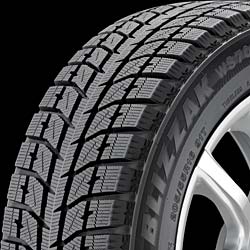
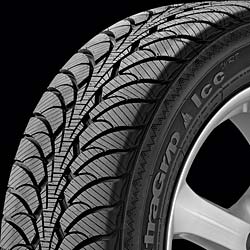 Example Winter Snow Tires from
Bridgestone and Dunlop
Example Winter Snow Tires from
Bridgestone and Dunlop
I put Bridgestone Blizzak Winter Snow tires on a BMW 3 series.
The ice and snow performance was nothing short of incredible!
If the snow was not deeper than the car I could go anywhere - with
ease. After a 12 inch snow I was even able to plow snow with
the front of the car. Braking and handling in the snow was
awesome. You seriously feel like a super hero when using these in snow and ice.
However, on dry pavement they are a bit "mushy" and do not feel very
good at high speeds. In addition, they had a do not exceed
speed of 99 MPH. When you have these tires on, you actually HOPE
for snowy roads. If you live in mountain snow areas or where
there are very harsh winters, these tires are the way to go.
Performance Snow Tires
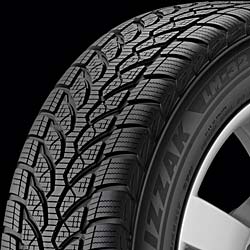
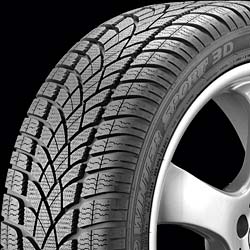 Example Performance Snow Tires
from Bridgestone and Dunlop
Example Performance Snow Tires
from Bridgestone and Dunlop
I use Bridgestone Blizzak LM25 performance snow tires on my Infinity
G37. They work much
better than all season tires in the snow in Ice. Over the
last 8 years that I have been using Performance Winter Tires there
has never been a time where I was unable to travel. They
are very confidence inspiring. At the same time, these tires
perform good on those sunny winter days also. They are speed
rated for higher speeds (up to 130 MPH) and had a better feel in dry
conditions. Here in the United States Midwest they are a great
fit.
The two downsides of either type of snow tires is the initial cost
and having to switch back and forth twice and year. The
cost is not too bad if you consider you are not wearing out your
other tires during the winter. Since you are not using
your summer tires part of the year, they will last longer so you
won't need to replace them as soon as you would if you used them all
year long. But it will still be a little more expensive than
just running all season tires all year long. But it is a small
price to pay for the added performance and safety you will get by
matching your tires to the conditions.
The other downside is having to switch them back and forth. If
you buy the snow tires from a major tire chain they will usually
switch them back and forth for you for free. But you still
have schedule an appointment twice a year for this. And they
may charge for balancing also. Another option is to buy
another set of wheels to go with your winter tires. Major
retailers have "Winter Wheel and Tire packages" that are
economical. This way your winter tires are already mounted and
balanced on wheels and you can switch them back and forth yourself
in about 30 minutes.
Once you try true winter tires on your car you will be
hooked. Doesn't matter if you have a rear wheel drive
car, front wheel drive car, all wheel drive, or anything else
- the performance is so much better that you will never want
to use all season tires in the winter ever again.





